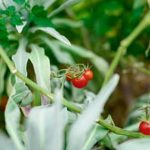When it comes to maximizing your fall vegetable garden’s potential, having a comprehensive fall vegetable gardening chart is essential. This tool can help you plan, organize, and execute your gardening efforts, ensuring that you make the most of the cooler weather and optimal growing conditions. By understanding what to plant and when, you can set yourself up for a successful harvest and a bountiful supply of fresh produce well into the fall season.
As summer transitions into autumn, many gardeners shift their focus to fall vegetable gardening. The cooler temperatures provide an ideal environment for certain vegetables to thrive, resulting in delicious and nutritious produce. Whether you are new to fall gardening or have some experience under your belt, utilizing a fall vegetable gardening chart can be extremely beneficial.
In this article, we will explore the importance of a fall vegetable gardening chart and discuss key vegetables to plant during the fall season. We will also provide tips for implementing your chart successfully and highlight common mistakes to avoid. Additionally, we will delve into how to effectively harvest and maintain your fall vegetable garden.
Embracing the benefits of fall vegetable gardening and utilizing the chart to maximize your harvest will be essential themes throughout this discussion. So grab your gardening gloves and get ready to dive into the world of fall vegetable gardening.
Understanding the Importance of a Fall Vegetable Gardening Chart
When it comes to fall vegetable gardening, having a comprehensive and well-planned chart can make all the difference in the success of your harvest. A fall vegetable gardening chart provides a detailed guide on when to plant, how to care for, and when to harvest your vegetables, taking into account the specific climate and conditions of your region. This tool is essential for organizing and maximizing the potential of your garden during the fall season.
To fully understand the importance of a fall vegetable gardening chart, consider the wide range of vegetables that can thrive during this time of year. From leafy greens like lettuce and spinach to root vegetables such as carrots and radishes, each type requires different planting and growing conditions. A fall vegetable gardening chart helps you keep track of these specific requirements, ensuring that you provide the best environment for each plant to flourish.
Utilizing a fall vegetable gardening chart tailored to your specific region is crucial for planning a successful garden. Different regions have varying climate patterns and temperature changes, which directly impact the ideal planting times and growing conditions for vegetables. By following a customized chart, you can optimize your garden’s potential by aligning with the natural conditions of your area.
- Research local varieties well suited for autumn planting
- Consider frost dates for your specific region
- Adjust planting dates based on expected temperature changes
Ultimately, by understanding the importance of a fall vegetable gardening chart, you can ensure that you are making informed decisions about what to plant and when in order to reap bountiful rewards from your fall garden.
- Avoid overcrowding plants in an attempt to maximize yield
- Properly maintain soil moisture levels throughout the season
- Monitor for signs of pests or disease regularly
Key Vegetables to Plant in the Fall Season
As the weather cools and summer harvests come to an end, it’s time to start thinking about planting a variety of vegetables that thrive in the fall season. Whether you’re a seasoned gardener or just starting out, having a fall vegetable gardening chart can be extremely beneficial in ensuring a successful and bountiful harvest.
By understanding the key vegetables to plant in the fall season and using a comprehensive fall vegetable gardening chart, you can maximize your garden’s productivity and enjoy fresh, homegrown produce well into the autumn months.
When planning your fall vegetable garden, consider including a mix of cool-season crops that are known for their ability to withstand colder temperatures and continue growing as the days get shorter. Some key vegetables to plant in the fall season include:
- Broccoli
- Carrots
- Spinach
- Kale
- Lettuce
- Brussels sprouts
- Radishes
- Peas
These vegetables not only thrive in cooler weather but also offer a variety of flavors and nutritional benefits for you and your family. By incorporating these key vegetables into your fall garden, you can create a diverse and vibrant harvest that will enhance your autumn meals.
In addition to these vegetables, it’s important to consider your specific region’s climate and growing conditions when planning your fall garden. Different regions have varying frost dates and temperature ranges, so it’s essential to consult with a local gardening expert or use a reliable fall vegetable gardening chart tailored to your region.
This will help you determine the best timing for planting each crop and optimize your garden’s potential for success. Remember, proper timing is crucial for maximizing yields and ensuring that your fall vegetable garden flourishes throughout the season.
The Best Fall Vegetable Gardening Chart for Your Region
When it comes to fall vegetable gardening, one of the key tools for success is having a reliable and accurate fall vegetable gardening chart for your specific region. This chart provides valuable information on when to plant, how deep to sow the seeds, and when to expect harvest. Understanding the best vegetables to plant in the fall season and the specific timing for your region can significantly impact the success of your fall garden.
Why Having the Right Chart Matters
Having the right fall vegetable gardening chart tailored to your region is crucial because different areas have varying climate conditions and frost dates. By using a chart specifically designed for your geographic location, you are able to optimize your planting schedule and ensure that your crops have the best chance of thriving. A generic chart may not take into account these regional differences, which could lead to disappointing results in your fall garden.
The Importance of Timing
The best fall vegetable gardening chart for your region will outline the ideal timing for planting each type of vegetable. It will consider factors such as first frost date, average temperature ranges, and daylight hours in order to provide accurate guidance.
By following this timing closely, you can maximize the growing season for each crop and increase your chances of a successful harvest. Additionally, understanding regional weather patterns can help you plan for potential challenges like early frosts or unexpected temperature fluctuations.
With a reliable fall vegetable gardening chart customized for your region, you can confidently plan and execute a productive fall garden. By considering factors such as timing, local climate conditions, and recommended vegetables for fall planting, you are setting yourself up for success in growing a bountiful harvest before winter arrives.
Tips for Successfully Implementing Your Fall Vegetable Gardening Chart
Choosing the Right Vegetables
When implementing your fall vegetable gardening chart, it’s essential to choose the right vegetables for the season. Some of the best vegetables to plant in the fall include broccoli, Brussels sprouts, carrots, kale, lettuce, radishes, and spinach. These vegetables thrive in cooler temperatures and can withstand light frosts, making them perfect for a fall harvest.
Understanding Planting Dates
One crucial aspect of successfully implementing your fall vegetable gardening chart is understanding planting dates. Different vegetables have different planting times, and it’s important to follow a planting schedule based on your region’s climate. Consult your local agricultural extension office or gardening resources to determine the ideal planting dates for each vegetable in your area.
Caring for Your Fall Garden
Once you’ve planted your fall vegetables according to your gardening chart, it’s important to provide proper care throughout the season. This includes regular watering, mulching to retain soil moisture and regulate temperature, as well as monitoring for pests and diseases that may be more prevalent in the fall. Additionally, using row covers or cold frames can help protect your plants from early frosts and extend the growing season.
By following these tips and effectively utilizing a fall vegetable gardening chart tailored to your region, you can maximize the success of your fall garden and enjoy a bountiful harvest of fresh, nutritious produce.
Common Mistakes to Avoid in Fall Vegetable Gardening
When it comes to fall vegetable gardening, many gardeners may overlook the importance of using a fall vegetable gardening chart. This valuable tool can help you plan and organize your planting schedule, ensuring that you make the most of the fall growing season.
A fall vegetable gardening chart provides a guide for when to plant specific vegetables, taking into account the average first frost date in your region. By following a fall vegetable gardening chart, you can optimize your garden space and increase your chances of a successful harvest.
One of the key benefits of using a fall vegetable gardening chart is that it helps you avoid common mistakes that can hinder your garden’s productivity. For example, planting certain vegetables too late in the season may not allow them enough time to reach maturity before the frost sets in.
On the other hand, starting your seeds indoors too early without considering transplanting times can also lead to stunted growth or bolting. By utilizing a fall vegetable gardening chart tailored to your region, you can steer clear of these pitfalls and ensure that your plants have the best chance of thriving.
In addition to timing considerations, a fall vegetable gardening chart can also provide guidance on spacing and companion planting for various vegetables. Some plants thrive when grown together while others may compete for resources or be susceptible to the same pests and diseases. With the right information at hand, you can plan an effective layout for your fall vegetable garden and avoid overcrowding or unfavorable planting combinations.
| Mistake | Impact |
|---|---|
| Planting too late | Vegetables won’t mature before first frost |
| Overcrowding | Plants compete for resources and sunlight |
| Improper spacing | Leads to poor airflow and increased risk of disease |
Harvesting and Maintaining Your Fall Vegetable Garden
When it comes to harvesting and maintaining your fall vegetable garden, there are a few key things to keep in mind. First, you’ll want to make sure that you are harvesting your vegetables at the right time.
This means paying close attention to the recommended harvest times for each type of vegetable that you have planted. Using a fall vegetable gardening chart can be incredibly helpful in keeping track of these timings, ensuring that you don’t let any of your hard work go to waste.
In addition to harvesting your vegetables at the right time, it’s also important to properly maintain your fall vegetable garden as the season progresses. This may include tasks such as removing any weeds, protecting your plants from frost, and ensuring that they are getting enough water as the weather gets colder. Again, a fall vegetable gardening chart can provide you with valuable guidance on when and how to perform these maintenance tasks for different types of vegetables.
Finally, as you near the end of the fall season, it’s essential to properly prepare your garden for winter. This may involve cleaning up any remaining plant debris, amending the soil for future planting seasons, and possibly even covering some of your crops to extend their harvest into the winter months. A reliable fall vegetable gardening chart will offer tailored advice on how best to prepare your specific types of vegetables for the colder weather ahead.
| Vegetable | Recommended Harvest Time |
|---|---|
| Carrots | Late fall or early winter |
| Kale | Harvest leaves as needed throughout fall and winter months |
| Radishes | Harvest when roots reach desired size (usually within 3-4 weeks of planting) |
Conclusion
In conclusion, fall vegetable gardening can be a rewarding and productive endeavor for any gardening enthusiast. With the right planning and execution, a bountiful harvest of nutritious and delicious vegetables can be achieved during the fall season. The use of a fall vegetable gardening chart is crucial in ensuring that the right vegetables are planted at the right time, maximizing the potential yield of the garden.
By utilizing a fall vegetable gardening chart, gardeners are able to plan and organize their planting schedule effectively. This enables them to take advantage of the ideal growing conditions during the fall season, resulting in healthy and thriving crops. Additionally, having a clear understanding of which vegetables thrive best in different regions is essential for successful fall gardening.
Furthermore, embracing the benefits of fall vegetable gardening goes beyond just reaping a plentiful harvest. It also allows gardeners to continue their passion for gardening even as the summer months come to an end.
With careful planning, knowledge of the best vegetables to plant, and using a well-suited fall vegetable gardening chart for their specific region, gardeners can extend their growing season and enjoy fresh produce well into autumn and even winter. So grab your fall vegetable gardening chart and get ready to enjoy a successful and fulfilling season of fall vegetable gardening.
Frequently Asked Questions
What Vegetables Are Best to Plant in the Fall?
The best vegetables to plant in the fall are those that thrive in cooler temperatures, such as leafy greens like lettuce, kale, and spinach. Root vegetables like carrots, beets, and radishes also do well when planted in the fall.
When Should I Start My Fall Vegetable Garden?
You should start your fall vegetable garden about 6-8 weeks before the first expected frost date in your area. This timing will give your vegetables enough time to grow and mature before colder temperatures set in.
What Is the Best Vegetable to Plant in Autumn?
The best vegetable to plant in autumn depends on your location and climate. However, generally speaking, cool-weather crops like broccoli, cauliflower, and Brussels sprouts are great options for planting in the fall. These vegetables can handle the chillier temperatures and still produce a bountiful harvest.

If you’re looking to get into vegetable gardening, or are just looking for some tips on how to make your current garden better, then you’ve come to the right place! My name is Ethel and I have been gardening for years. In this blog, I’m going to share with you some of my best tips on how to create a successful vegetable garden.





